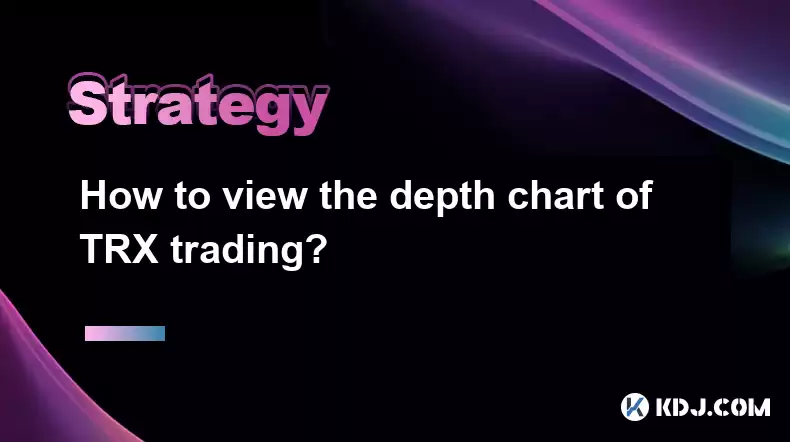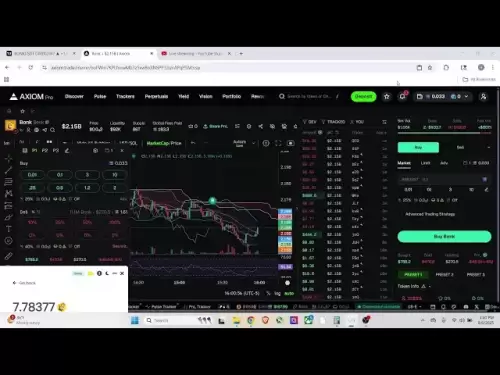-
 Bitcoin
Bitcoin $116700
2.16% -
 Ethereum
Ethereum $3830
5.76% -
 XRP
XRP $3.082
4.56% -
 Tether USDt
Tether USDt $1.000
0.04% -
 BNB
BNB $777.8
1.96% -
 Solana
Solana $173.2
5.46% -
 USDC
USDC $0.0000
0.02% -
 Dogecoin
Dogecoin $0.2146
6.85% -
 TRON
TRON $0.3384
0.92% -
 Cardano
Cardano $0.7676
5.51% -
 Hyperliquid
Hyperliquid $39.28
4.90% -
 Sui
Sui $3.723
9.07% -
 Stellar
Stellar $0.4164
6.32% -
 Chainlink
Chainlink $17.36
5.78% -
 Bitcoin Cash
Bitcoin Cash $580.9
3.62% -
 Hedera
Hedera $0.2544
5.50% -
 Ethena USDe
Ethena USDe $1.001
0.02% -
 Avalanche
Avalanche $22.81
3.81% -
 Litecoin
Litecoin $120.8
3.60% -
 UNUS SED LEO
UNUS SED LEO $8.956
-0.35% -
 Toncoin
Toncoin $3.311
4.28% -
 Shiba Inu
Shiba Inu $0.00001266
4.15% -
 Uniswap
Uniswap $10.10
5.97% -
 Polkadot
Polkadot $3.786
4.80% -
 Dai
Dai $1.000
0.01% -
 Monero
Monero $280.4
-4.02% -
 Bitget Token
Bitget Token $4.405
1.69% -
 Cronos
Cronos $0.1480
5.13% -
 Pepe
Pepe $0.00001087
5.67% -
 Ethena
Ethena $0.6348
11.62%
How to view the depth chart of TRX trading?
To view the TRX depth chart on Binance, log in, select the TRX trading pair, and click the "Depth" tab to analyze buy and sell orders at different price levels.
Apr 20, 2025 at 12:35 pm

Trading in cryptocurrencies like TRON (TRX) involves understanding various market indicators, one of which is the depth chart. A depth chart provides a visual representation of the supply and demand for a specific cryptocurrency at different price levels. It is an essential tool for traders to gauge the market's liquidity and potential price movements. In this article, we will explore how to view the depth chart of TRX trading, step-by-step, using popular trading platforms.
Understanding the Depth Chart
Before diving into the specifics of viewing the TRX depth chart, it's important to understand what a depth chart represents. A depth chart, also known as an order book chart, shows the cumulative buy and sell orders at various price levels. The chart typically has two axes: the horizontal axis represents the quantity of TRX, and the vertical axis represents the price. The left side of the chart displays the buy orders (bids), and the right side displays the sell orders (asks). The area where the buy and sell orders meet is often referred to as the "market depth."
Choosing a Trading Platform
To view the TRX depth chart, you first need to select a trading platform that supports TRX and offers a depth chart feature. Some popular platforms that support TRX trading and provide depth charts include Binance, Huobi, and OKEx. For this guide, we will use Binance as an example, but the steps are generally similar across different platforms.
Accessing the TRX Depth Chart on Binance
To view the TRX depth chart on Binance, follow these detailed steps:
- Log in to your Binance account. If you don't have an account, you'll need to create one and complete the necessary verification steps.
- Navigate to the TRX trading pair. You can do this by typing "TRX" in the search bar at the top of the Binance homepage. For example, if you want to trade TRX against Bitcoin, you would select the "TRX/BTC" pair.
- Access the depth chart. Once you are on the TRX trading pair page, look for the "Depth" tab. It is usually located near the top of the page, alongside other tabs like "Market" and "Limit."
- View the depth chart. Click on the "Depth" tab to display the TRX depth chart. You will see a graphical representation of the buy and sell orders at different price levels.
Interpreting the TRX Depth Chart
Understanding how to interpret the TRX depth chart is crucial for making informed trading decisions. Here's what to look for:
- Bid Side: The left side of the chart represents the buy orders. The higher the bids, the more demand there is for TRX at those price levels. A deep bid side indicates strong support levels, suggesting that the price may not drop below these levels easily.
- Ask Side: The right side of the chart represents the sell orders. The lower the asks, the more supply there is for TRX at those price levels. A deep ask side indicates strong resistance levels, suggesting that the price may struggle to rise above these levels.
- Market Depth: The point where the bid and ask sides meet is the current market price. A chart with a wide spread between the bid and ask sides indicates low liquidity, which can lead to higher volatility. Conversely, a narrow spread suggests high liquidity and more stable price movements.
Using the Depth Chart for Trading
The TRX depth chart can be a powerful tool for traders looking to execute their strategies effectively. Here are some ways you can use the depth chart:
- Identifying Support and Resistance Levels: By analyzing the depth chart, you can identify key price levels where there is significant buying or selling pressure. These levels can serve as potential entry or exit points for your trades.
- Assessing Liquidity: The depth chart allows you to assess the liquidity of the TRX market at different price levels. High liquidity means you can buy or sell larger amounts of TRX without significantly impacting the price.
- Spotting Market Trends: By monitoring changes in the depth chart over time, you can spot trends in the supply and demand for TRX. For example, if the bid side is becoming deeper while the ask side is thinning, it may indicate an upcoming price increase.
Customizing the Depth Chart on Binance
Binance offers several options to customize the depth chart to suit your trading needs. Here's how you can adjust the settings:
- Change the Depth Scale: You can adjust the depth scale to show more or fewer price levels. This is useful for focusing on specific price ranges that are relevant to your trading strategy.
- Switch Between Different Views: Binance allows you to switch between different views of the depth chart, such as a zoomed-in view or a full view. This helps you analyze the chart from different perspectives.
- Enable Price Alerts: You can set price alerts on the depth chart to notify you when TRX reaches certain price levels. This is helpful for staying updated on market movements without constantly monitoring the chart.
Frequently Asked Questions
Q: Can I view the TRX depth chart on mobile trading apps?
A: Yes, many trading platforms, including Binance, offer mobile apps that allow you to view the TRX depth chart. The steps to access the depth chart on a mobile app are similar to those on the desktop version, but the interface may vary slightly.
Q: How often is the TRX depth chart updated?
A: The TRX depth chart is typically updated in real-time, reflecting the most current buy and sell orders in the market. However, the exact frequency of updates may vary depending on the trading platform and market conditions.
Q: Is it possible to trade directly from the TRX depth chart?
A: Some trading platforms allow you to place orders directly from the depth chart by clicking on specific price levels. However, not all platforms support this feature, so you may need to use the standard order entry forms to execute your trades.
Q: Can the TRX depth chart be used for long-term investment decisions?
A: While the TRX depth chart is primarily used for short-term trading and market analysis, it can also provide insights into the overall liquidity and market sentiment, which can be useful for long-term investment decisions. However, it should be used in conjunction with other fundamental and technical analysis tools.
Disclaimer:info@kdj.com
The information provided is not trading advice. kdj.com does not assume any responsibility for any investments made based on the information provided in this article. Cryptocurrencies are highly volatile and it is highly recommended that you invest with caution after thorough research!
If you believe that the content used on this website infringes your copyright, please contact us immediately (info@kdj.com) and we will delete it promptly.
- Ollama Turbo & GPT-OSS: Revolutionizing AI Model Accessibility and Speed
- 2025-08-07 20:29:33
- Bitcoin Ordinals: NFTs Evolving Bitcoin or a Fleeting Fad?
- 2025-08-07 20:29:33
- BlockchainFX, Bitcoin Swift, Crypto Presales: What's the Hype?
- 2025-08-07 19:10:13
- Pepe Dollar (PEPD) vs. SPX6900: The Meme Coin Battle of 2025
- 2025-08-07 19:50:12
- XRP Investment Regret: Are You Missing Out on the Next Big Thing?
- 2025-08-07 19:50:12
- XRPINU: More Than Just a Meme? Roadmap, Liquidity, and the Future of Funny Money
- 2025-08-07 19:56:46
Related knowledge

How to avoid common crypto investment mistakes?
Jul 13,2025 at 01:35am
Understanding the Risks of Crypto InvestmentInvesting in cryptocurrency can be highly rewarding, but it also comes with significant risks. One of the ...

What is a long-short crypto strategy?
Jul 15,2025 at 10:56am
Understanding the Basics of a Long-Short Crypto StrategyA long-short crypto strategy is an investment approach where traders simultaneously take long ...

What is a long-short crypto strategy?
Jul 11,2025 at 01:28pm
Understanding the Basics of Long-Short Crypto StrategyA long-short crypto strategy is an investment approach where traders take both long and short po...

How to use the RSI indicator for crypto?
Jul 12,2025 at 03:56pm
Understanding the RSI Indicator in Cryptocurrency TradingThe Relative Strength Index (RSI) is a momentum oscillator used to measure the speed and chan...

Is copy trading a good strategy for crypto beginners?
Jul 12,2025 at 08:28am
Understanding Copy Trading in the Cryptocurrency MarketCopy trading is a strategy where novice traders replicate the trades of experienced investors a...

How to build a crypto portfolio with $1000?
Jul 13,2025 at 08:14pm
Understanding the Basics of Cryptocurrency InvestmentBuilding a crypto portfolio with $1000 starts with understanding the fundamentals of cryptocurren...

How to avoid common crypto investment mistakes?
Jul 13,2025 at 01:35am
Understanding the Risks of Crypto InvestmentInvesting in cryptocurrency can be highly rewarding, but it also comes with significant risks. One of the ...

What is a long-short crypto strategy?
Jul 15,2025 at 10:56am
Understanding the Basics of a Long-Short Crypto StrategyA long-short crypto strategy is an investment approach where traders simultaneously take long ...

What is a long-short crypto strategy?
Jul 11,2025 at 01:28pm
Understanding the Basics of Long-Short Crypto StrategyA long-short crypto strategy is an investment approach where traders take both long and short po...

How to use the RSI indicator for crypto?
Jul 12,2025 at 03:56pm
Understanding the RSI Indicator in Cryptocurrency TradingThe Relative Strength Index (RSI) is a momentum oscillator used to measure the speed and chan...

Is copy trading a good strategy for crypto beginners?
Jul 12,2025 at 08:28am
Understanding Copy Trading in the Cryptocurrency MarketCopy trading is a strategy where novice traders replicate the trades of experienced investors a...

How to build a crypto portfolio with $1000?
Jul 13,2025 at 08:14pm
Understanding the Basics of Cryptocurrency InvestmentBuilding a crypto portfolio with $1000 starts with understanding the fundamentals of cryptocurren...
See all articles

























































































